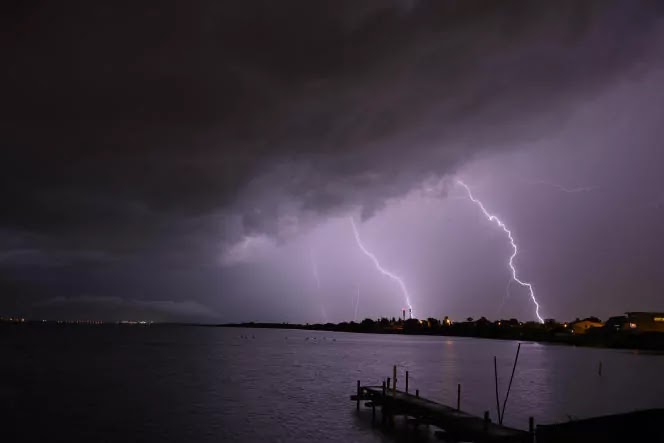Introduction:
Thunderstorms and lightning strikes can be both awe-inspiring and dangerous natural phenomena. While we marvel at the power of lightning, it is crucial to understand the precautions one should take to stay safe during these electrical storms. In this article, we will examine the truths and myths surrounding lightning safety and provide valuable insights into how to protect oneself. Let's delve into the facts and essential guidelines to ensure your safety during thunderstorms.
Understanding Lightning Strikes:
Lightning is a natural electrical discharge that occurs during a thunderstorm. It is the result of the buildup and discharge of electrical energy within a cloud or between clouds and the ground. The intensity of a lightning strike can reach temperatures hotter than the surface of the sun and can cause significant damage to life and property.
Table of Contents
- Seeking Shelter Indoors: A Vital Step
- Avoid Open Spaces and High Ground
- Steer Clear of Water Bodies
- Staying Safe in Vehicles
- Debunking Lightning Myths
- Ensuring Safety for Motorcyclists
- Protecting Electronic Devices During Thunderstorms
Seeking Shelter Indoors: A Vital Step
When thunder roars, it is essential to seek shelter indoors promptly. A substantial, enclosed building or a vehicle with a hard metal roof and windows closed can provide protection from lightning. Stay away from doors, windows, and any conductive paths, such as plumbing fixtures and electrical appliances, to minimize the risk of injury. Remember, it is safe to use cell phones or landlines during a thunderstorm as long as you are indoors.
Also Read:- Severe Storms and Rotation Risks Threaten Northwestern Ontario and Western Canada
- Winning Thailand Candidate for PM Blocked from Power: Pita Limjaroenrat
Avoid Open Spaces and High Ground
Open spaces and elevated areas are more susceptible to lightning strikes. If caught outdoors during a thunderstorm, seek lower ground immediately. Find a low-lying area away from trees, poles, or other tall structures. Crouch down with your feet together and minimize your contact with the ground until the storm passes.
Steer Clear of Water Bodies
Water is a conductor of electricity, making it crucial to avoid any body of water during a thunderstorm. Whether it is a swimming pool, lake, river, or the beach, it is unsafe to be in or near water during an electrical storm. Lightning can travel through the water and cause significant harm or even death.
Staying Safe in Vehicles
Vehicles with hard metal roofs provide a certain level of protection against lightning strikes. When a thunderstorm approaches, it is safer to remain inside your vehicle with the windows closed. Avoid touching any metal parts of the car, including door handles, steering wheels, and radios, as they can conduct electricity. Convertibles, motorcycles, and bicycles do not offer sufficient protection and should be avoided during thunderstorms.
Debunking Lightning Myths
There are several misconceptions about lightning that need to be addressed:
-
"Lightning never strikes the same place twice": Lightning can strike the same location multiple times, especially tall structures like skyscrapers, lightning rods, and trees.
-
"If it's not raining, I'm safe from lightning": Lightning can strike even if rain is not falling directly overhead. It can strike several miles away from the center of the storm, known as a "bolt from the blue."
-
"Rubber tires on a vehicle protect me from lightning": While the tires provide insulation from the ground, the metal body of the vehicle offers more significant protection.
Ensuring Safety for Motorcyclists
Motorcyclists are at higher risk of lightning strikes due to their exposure to the elements. To minimize the dangers, it is advisable to pull over and seek shelter in a safe, enclosed structure during a thunderstorm. Avoid parking near tall objects or under trees, as they can attract lightning. If shelter is not available, dismount the motorcycle and crouch down on the balls of your feet, minimizing contact with the ground.
Protecting Electronic Devices During Thunderstorms
During thunderstorms, it is a common concern whether electronic devices need to be unplugged. While it is prudent to unplug sensitive equipment such as computers, televisions, and game consoles to prevent damage from power surges, the average household appliances are generally safe to remain plugged in. However, using surge protectors can provide an extra layer of protection against power spikes.
Keywords: lightning strikes, thunderstorms, lightning safety, seeking shelter, open spaces, water bodies, staying safe in vehicles, lightning myths, motorcyclists, protecting electronic devices, power surges.
Read More:- Elon Musk and Tesla to Launch New British Electricity Supplier
- John "Horse" Longmire: The Sydney Swans' Legendary Coach Rising Star on the Field: The Horse Takes the Reins:
Thanks for Visiting Us – Mirror7News.com


Post a Comment